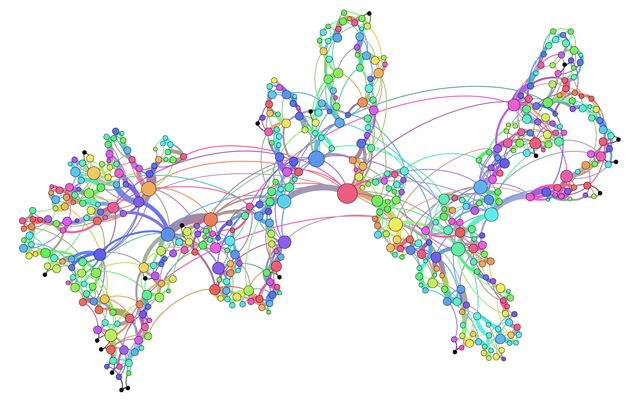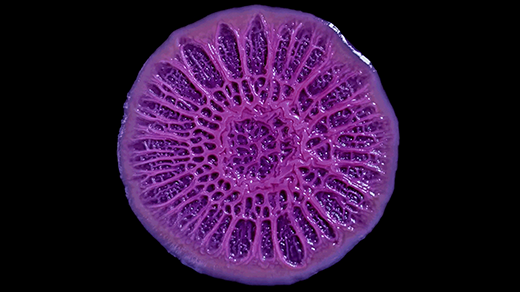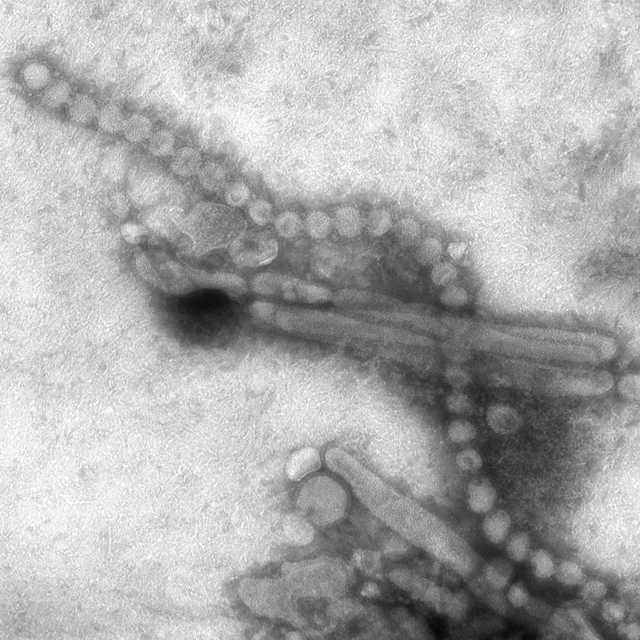Evolution as Opportunist

Evolution is littered with examples of opportunism. Hosts infected by viruses found new uses for the genetic material the agents of disease left behind; metabolic enzymes somehow came to refract light rays through the eye’s lens; mammals took advantage of the sutures between the skull bones to help their young pass through the birth canal; and, in the signature example, feathers appeared in fossils before the ancestors of modern birds took to the skies.
In cases like these, evolution has made do by co-opting an existing trait for a new use when the right circumstances arose. These instances offer the lesson that a trait’s current use does not always explain its origin.
In 1982, Stephen Jay Gould and Elisabeth Vrba gave a name to this phenomenon: exaptation. As they described it, exaptation is a counterpart to the more familiar concept of adaptation. While exaptations are traits that have been enlisted for new uses, adaptations have been shaped by natural selection for their current function, they wrote.
The order and arrangement of the bones in the four limbs of land-dwelling animals are an exaptation for walking on land, since these limbs originally evolved for navigating water; by contrast, changes to the shape of the bones and to the musculature are adaptations, Gould and Vrba wrote.
The concept has been controversial since it first arose, largely because it has been so difficult to distinguish between the forces of exaptation and adaptation in the historical context of evolution. Until recently, evidence for the co-opting of traits has been limited to case studies, such as the evolution of the feather. But examples from the morphological, behavioral and, increasingly, molecular realms have led some biologists to suspect that this phenomenon may play a much more sizable role in evolution than is generally appreciated.
A new study in Nature (opens a new tab) offers what may be the first attempt to comprehensively identify potential exaptations. The results of the study, which focused on metabolism, complement anecdotal examples and take an initial step toward quantifying exaptation’s contribution, at least within this system, said researchers not involved in the work.
Scientists used computational modeling to create randomized metabolic systems tuned to use one kind of fuel, which, they showed, often have the latent potential to use other fuels they have never before consumed. Thus, a hypothetical organism deprived of its usual food source could manage just fine on a second, completely new fuel. In this scenario, that capacity to switch fuels gives rise to an exaptation.
“I think it’s becoming increasingly clear that exaptation is very important in the evolution of biologically important processes,” said Joe Thornton (opens a new tab), a molecular evolutionary biologist at the University of Chicago and the University of Oregon, who was not involved in the study. “There is now a growing body of evidence indicating the actual importance of these processes that Gould and Vrba were pointing to.”
Seeking Hidden Potential
Identifying an exaptation requires a look back at history, which is not easy to do with most biological traits. Andreas Wagner (opens a new tab) and Aditya Barve, of the University of Zurich, sidestepped this problem by simulating evolution and testing the results. They focused on metabolism, using a computational representation of the networks of reactions organisms use to break down food and produce the molecules necessary for survival and growth.
They wanted to know: If a network was adapted to use a particular carbon source, such as glucose, could it also use other carbon sources, such as adenosine or acetate?

Because a study of this scope is not feasible using real organisms, Barve and Wagner began with a model of the 1,397-reaction network used by the bacterium E. coli. From this starting point, they sought to evolve the network by swapping out a reaction from the E. coli network and replacing it with a randomly selected reaction from the pool of known metabolic reactions. (Although science has not documented every metabolic reaction in nature, metabolism is relatively well understood and is easier to work with and more universal than other systems.)
They set up one requirement for this swap: The network must remain able to use glucose. This requirement served as a stand-in for natural selection, and it filtered out the dysfunctional swaps.
Barve and Wagner produced 500 new metabolic networks, each the result of 5,000 swaps. They then evaluated each one, asking whether it could metabolize any of 49 other carbon sources in addition to glucose. It turned out that 96 percent of the networks could employ multiple carbon sources. The average network could use almost five of them. In other words, one adaptation (viability on glucose) was accompanied by multiple potential exaptations.
The results weren’t limited to glucose-driven networks. Wagner and Barve repeated the experiment, selecting for the ability to use each of the other 49 carbon source molecules, and found that the majority of these randomly created networks could function on multiple carbon sources.
They also found that this flexibility couldn’t be easily explained by so-called metabolic proximity between carbon sources. In other words, a network that could use glucose was not reliably predisposed to be able to use a molecule that could be easily made from glucose. “If that was the only explanation for the incidence of exaptation, that would not be interesting,” Wagner said. “It would be a necessary consequence of how biochemistry works.”
Instead, the complexity of the network appeared to determine its flexibility; the more reactions in a network, the greater its potential for exaptation. “A lot of what organisms do could actually be engineered in a much simpler way,” Wagner said. “This result suggests this complexity can have important byproducts, namely traits that are potentially beneficial.”
Beyond Metabolism
The lens of the eye is packed with proteins called crystallins that refract light rays and focus them on the retina. Crystallins appear to have been borrowed from other, unrelated jobs. For instance, alphaB-crystallin is found in the heart and elsewhere, where it protects other proteins under stress, said Joram Piatigorsky (opens a new tab), an emeritus scientist at the National Eye Institute at the National Institutes of Health. Other crystallins can catalyze metabolic reactions, he said.
Barve and Wagner’s work adds to a growing number of examples of exaptation at the molecular level. Thornton, for example, has studied the evolution of hormones and their receptors, which fit together like lock and key. Under the right circumstances, he found, one half of a partnership can be co-opted to give rise to a new hormone-receptor system.
Thirty-one years ago, Gould and Vrba suggested that repetitive DNA sequences known as transposons, which originated from viruses, might serve no direct function at first, but may be used to great advantage later on. Since then, research has shown that transposons played an important role in the evolution of pregnancy. “They come from viruses, but they can be utilized for something they are not built for,” said Günter Wagner (opens a new tab), an evolutionary biologist at Yale University and Andreas Wagner’s former doctoral adviser. The two are not related.
Shifting the Balance
The metabolism study suggests that a healthy portion of novel traits get their start as exaptations. In fact, the ratio skews heavily that way; networks selected for one trait, viability on glucose, had, on average, nearly five non-adaptive traits they could potentially draw upon. Barve and Wagner argue that this should prompt a rethinking of assumptions about the origins of beneficial traits.
Wagner explained by providing a scenario: Imagine that a microbiologist isolates a new bacterium and finds that the bacterium is viable on a fairly common carbon source. “So reflexively this microbiologist would say, well, the bacterium is viable on that carbon source because that is an adaptation, it has helped the bacterium survive in the past,” Wagner said. “But our observations say that is not necessarily true. Maybe this is just one of the byproduct traits.”
“If what we find holds in general, it will become very difficult to distinguish traits that are adaptations from the traits that are not adaptations,” Wagner said.
Even prior to this study, the two concepts — adaptation versus exaptation (drawn from nonadaptive traits or traits adapted for another purpose) — were difficult to separate. Gould and Vrba acknowledged that one can lead to the other, and that any complex feature contains both.
Others, however, say it’s impossible to distinguish adaptation from exaptation, rendering Gould and Vrba’s definition of exaptation redundant. “Nothing was ever designed for what it is currently used for,” said Greger Larson (opens a new tab), an evolutionary biologist at Durham University. He and his colleagues identify a decline in the use of exaptation relative to adaptation in evolutionary biology literature and blame the trend on the lack of a clear distinction; they propose redefining the term.
The murkiness of past selection pressures makes it challenging to say that any trait was ever truly adaptive. Birds’ and bats’ wings could be called exaptations of arms; however, the structural changes that followed cannot be called adaptations because “you are talking about a historical incident; it’s not something you can test,” said Mark Norell (opens a new tab), a vertebrate paleontologist at the American Museum of Natural History, who studied with Vrba.
However, some counter that exaptation and adaptation are indeed distinct, meaningful phenomena, although the distinction can be subtle. “Indeed, (virtually) everything is a modification of some previous form,” Thornton wrote in an email. “But that’s not the point.” The defining factor, he and others said, is the action of natural selection.
Thornton offered two examples: If new mutations enable an enzyme to detoxify a pesticide present in the environment, the detoxification activity is an adaptation; that is, it emerged as a result of natural selection. On the other hand, if a hormone once in charge of regulating one process is co-opted to regulate a second process, that is an exaptation because the hormone did not evolve by natural selection to regulate the second process.
The strength of Barve and Wagner’s theoretical approach was that they could definitely demonstrate the potential for exaptation outside of any historical context. By randomly assembling metabolic networks, they were able to sidestep the evolutionary baggage that would accompany real microbes. But to truly assess the role of exaptation in evolution, they will need to validate their results in living organisms. That’s what they hope to do next, though exactly how remains to be seen. “We are still trying to figure that out,” said Wagner. “It is a really hard problem.”
This article was reprinted on ScientificAmerican.com (opens a new tab).



